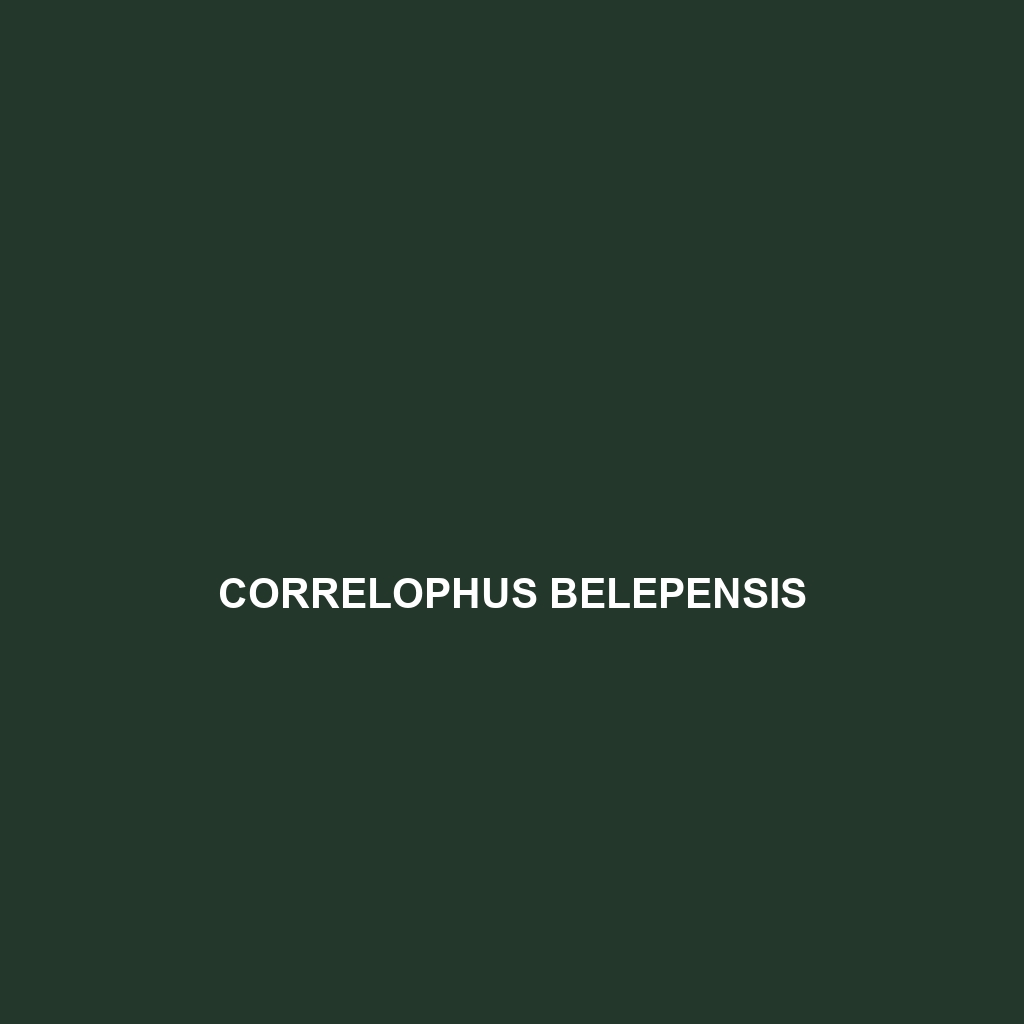Correlophus belepensis: A Comprehensive Species Description
Common Name: Correlophus belepensis
Scientific Name: Correlophus belepensis
Habitat
Correlophus belepensis is primarily found in the lush environments of New Caledonia, an archipelago located in the southwest Pacific. This species thrives in humid, tropical forests, particularly in areas with dense foliage and a variety of microhabitats. The unique limestone formations and rich biodiversity of New Caledonia create an ideal habitat, where these geckos can be discovered residing in tree hollows and among the leaf litter.
Physical Characteristics
Correlophus belepensis is a medium-sized gecko, typically reaching lengths of 8 to 12 inches (20 to 30 cm). Its coloration ranges from rich browns to soft grays, often featuring intricate patterns that provide excellent camouflage against the bark of trees. One distinctive characteristic is its relatively flat body shape and large, rounded head, which are adapted for a tree-dwelling lifestyle. The skin texture appears somewhat warty, enhancing its ability to blend into its surroundings.
Behavior
This species is primarily nocturnal, exhibiting activity during the night when it forages for food. Correlophus belepensis displays a range of behaviors, including climbing adeptly on branches and utilizing its prehensile tail for balance. Socially, these geckos are known to be relatively solitary, although they do engage in displays of territoriality, particularly during mating season. Their ability to remain still when threatened is a key behavior that helps them evade predators.
Diet
The diet of Correlophus belepensis consists mainly of insects, including crickets and moths, as well as other small invertebrates. They are known to utilize their keen eyesight to hunt at night and have developed a varied feeding strategy that includes ambush predation. These geckos are also opportunistic feeders, occasionally consuming fruit and nectar, which complements their diet and provides essential nutrients.
Reproduction
Correlophus belepensis displays unique reproductive habits. The breeding season typically occurs during the warmer months, and females lay two eggs per clutch, which are often deposited in leaf litter or hollowed bark. The incubation period lasts about 60 to 90 days, depending on environmental conditions. The hatchlings are independent from birth, showcasing characteristics similar to adults, which ensures a high rate of survival in their natural habitat.
Conservation Status
As of now, Correlophus belepensis is classified as endangered on the IUCN Red List. Habitat destruction due to deforestation and the introduction of invasive species pose significant threats to their population. Conservation efforts are underway to protect their natural habitats and raise awareness regarding the importance of preserving the biodiversity of New Caledonia.
Interesting Facts
One fascinating aspect of Correlophus belepensis is its ability to change color slightly to adapt to its surroundings, a trait that further aids in camouflage. Additionally, this species is less commonly studied than its relatives, making it a topic of interest for herpetologists and wildlife enthusiasts alike.
Role in Ecosystem
Correlophus belepensis plays a crucial role in its ecosystem as both a predator of insects and as prey for larger animals. By controlling insect populations, this gecko contributes to maintaining the ecological balance in its habitat. Furthermore, its interactions with plants and flowers as a nectar feeder may promote pollination, highlighting its importance in the diverse forest ecosystems of New Caledonia.
